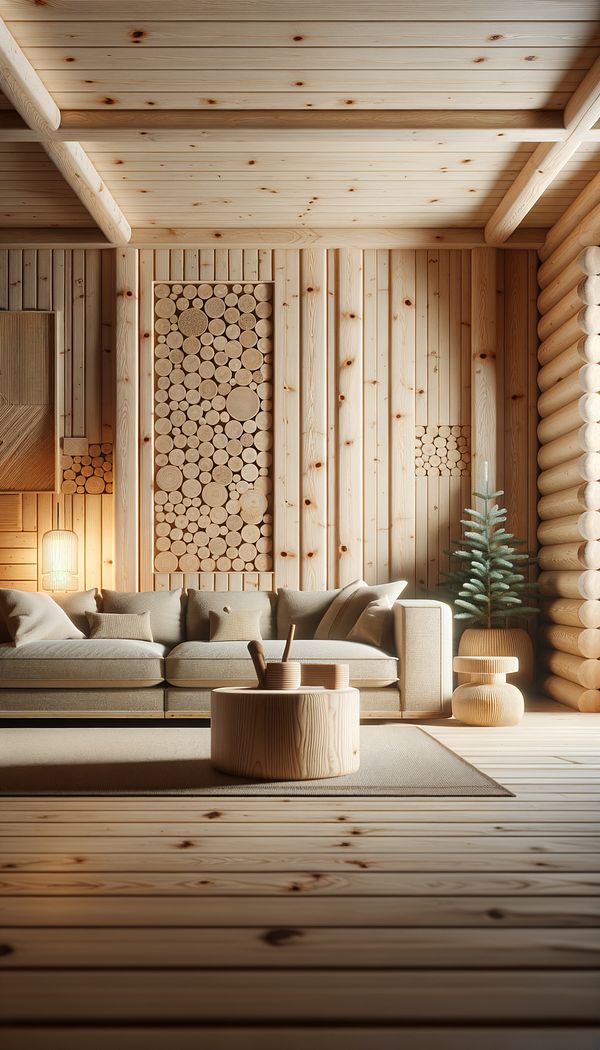What is Softwood?
Softwood is wood derived from coniferous trees.
Description
Softwood, as its name may suggest, is not necessarily softer or less durable than hardwood. The term ‘softwood’ actually refers to wood sourced from coniferous trees, which are known for their needles and cones. These trees grow faster and are generally more abundant than hardwood trees, making softwood a prevalent choice in various interior design and construction applications.
Common types of softwood include pine, cedar, spruce, and fir. Each of these has unique characteristics in terms of color, grain, density, and workability, making them suitable for different uses in interior design. For instance, cedar is often chosen for its aromatic qualities and natural resistance to decay, making it an excellent option for closets and storage areas.
The application of softwood within interior design is diverse. It can be used in structural elements, such as beams and frames, but is also popular for aesthetic applications such as flooring, paneling, and furniture. The ease of working with softwood, coupled with its natural beauty and variability, offers designers a versatile material to bring their visions to life.
Usage
Softwood is commonly used for structural components like framing in construction due to its strength and ease of use. In interior design, softwood's aesthetic appeal makes it a favorite for flooring, wall paneling, and custom furniture. For example, pine is widely used in Scandinavian design for its light color and natural patterns, while cedar is preferred in closets and storage areas for its durability and fragrance.
FAQs
-
Is softwood actually soft?
Despite its name, softwood is not necessarily softer than hardwood. The term refers to the type of tree (coniferous) from which it comes, not its hardness or durability. Some softwoods can be quite hard and durable.
-
Why is softwood popular in interior design?
Softwood is popular due to its aesthetic appeal, versatility, and the ease of sourcing and working with it. Its natural beauty and variety of types make it suitable for a wide range of design applications, from structural elements to decorative finishes.
-
How do I care for softwood furniture or flooring?
Care for softwood items involves regularly dusting and cleaning with a dry or slightly damp cloth. Avoid excessive moisture and direct sunlight, as these can cause warping or fading. For flooring and furniture, using specific wood cleaners and occasionally resealing or polishing can help maintain their look and durability.
Practical Application
When selecting softwood for your interior design projects, consider the specific properties of each type, such as color, grain, and resistance to wear or decay. This will ensure you choose the best softwood for the functionality and aesthetic appeal of your space. Also, bear in mind softwood's susceptibility to dents and scratches, especially in high-traffic areas, and take appropriate measures to protect your wooden surfaces.
-
Design Styles478 articles
-
Furniture Types599 articles
-
Materials & Textiles360 articles
-
Flooring & Carpets48 articles
-
Wall Treatments & Finishes157 articles
-
Self Storing LeavesSelf-storing leaves refer to a built-in feature in some tables that allows additional table sections to be stored within the table itself.
-
Nesting TablesNesting Tables are a set of small tables that fit one underneath another.
-
William & MaryWilliam & Mary refers to a style of furniture and interior design that was popular in England and later in the American colonies from 1689 to the early 1700s.
-
DownDown refers to the soft layers of fine feathers found beneath the tougher exterior feathers of birds, often used for insulation and padding in a variety of interior design elements.
-
VasselierA vasselier is a type of freestanding furniture.
